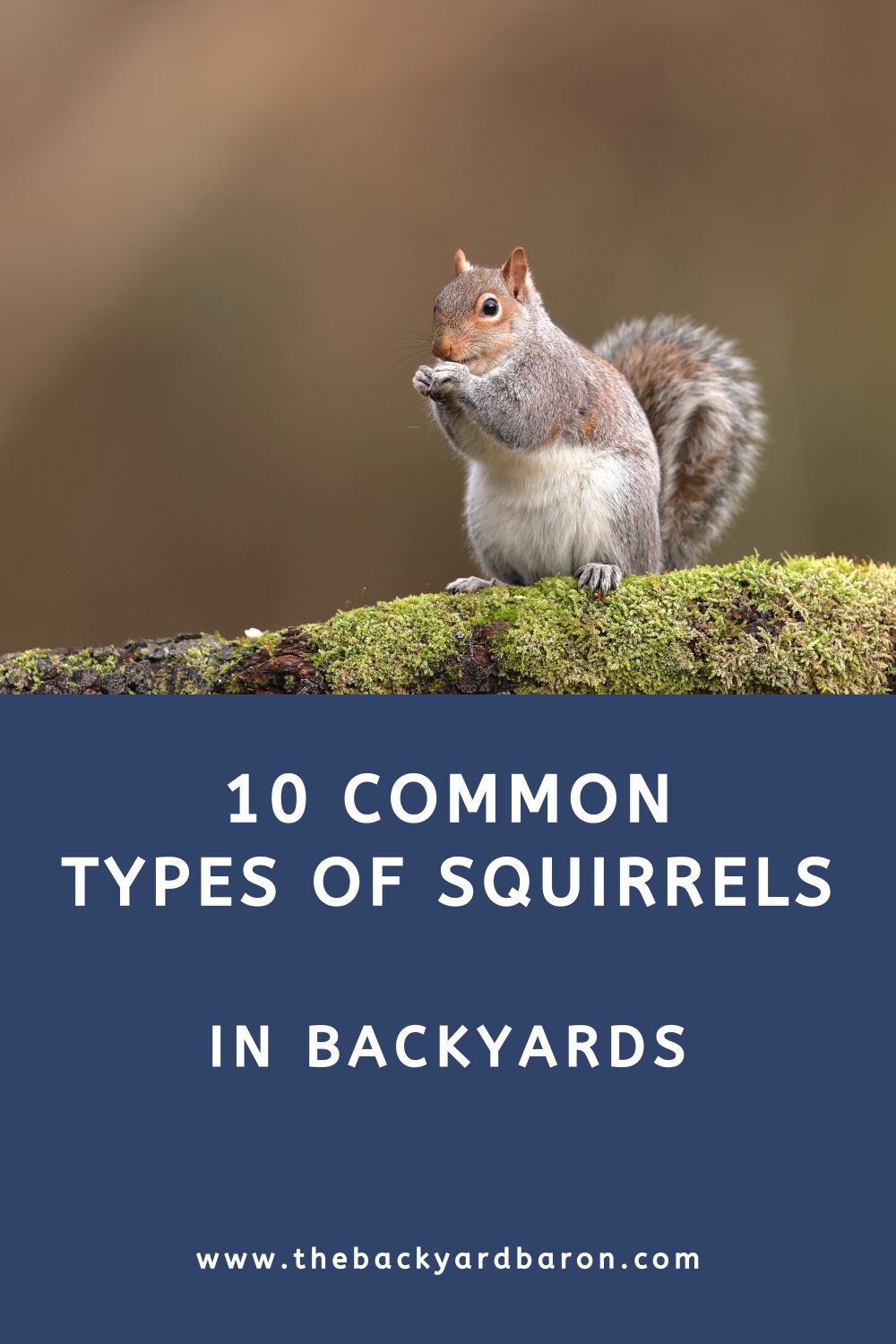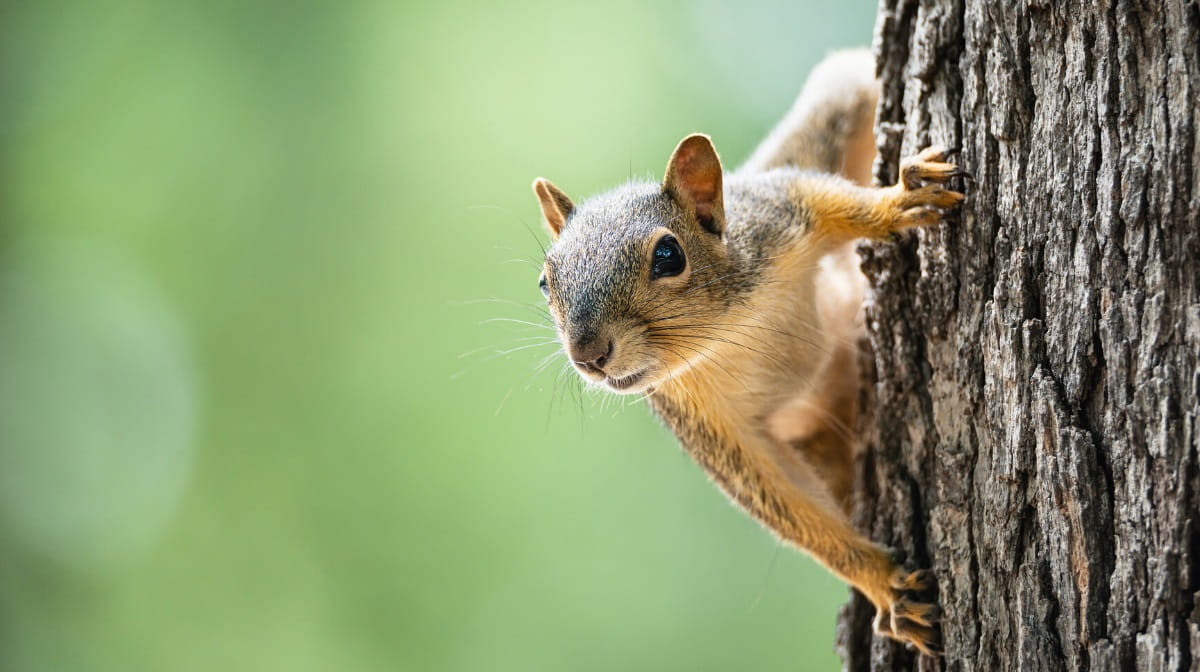Last updated: July 25, 2023
A guide with 10 of the most common types of squirrels we come across in backyards in the USA, with informative descriptions of each.
I’ve always been captivated by these energetic creatures, their cheeky antics, and the remarkable diversity that exists within their ranks. From the sprightly Eastern Gray Squirrel, a common sight in many of our neighborhoods, to the elusive flying squirrels gliding through the twilight sky.
In this article, we’re going to embark on a tour across the United States, uncovering the ten most common types of squirrels you might find in your own backyard. We’ll delve into their distinctive features, habitats, and the roles they may play in our ecosystems.
1. Eastern Gray Squirrel
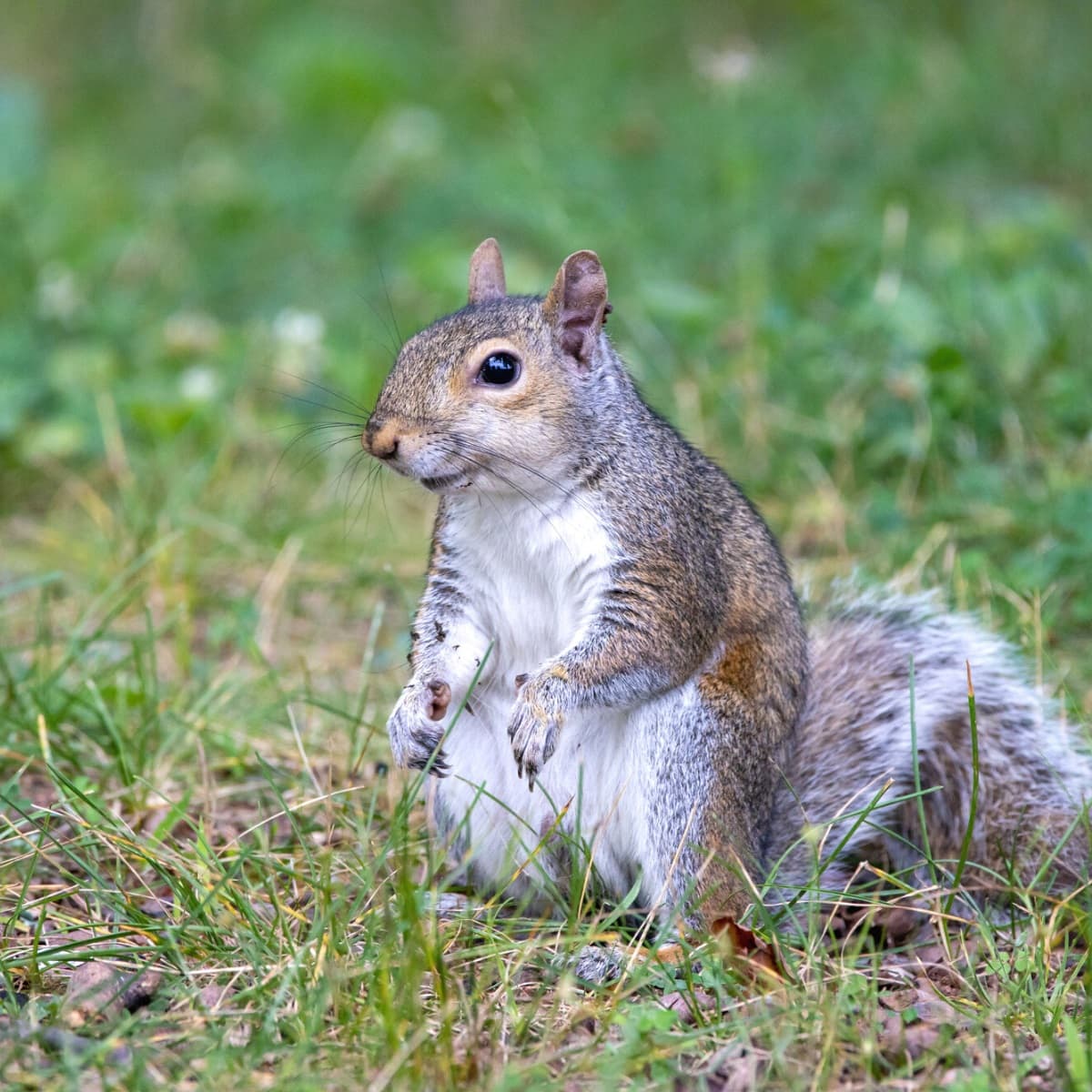
The Eastern Gray Squirrel, most commonly recognized by its sleek gray coat, is a prevalent sight in the eastern and midwestern United States, as well as parts of Canada.
Sometimes, their fur may exhibit shades of black or even pure white, adding to their charm. Their notable bushy tails and distinctive chattering often give them away as they go about their daily routine.
These squirrels are often observed darting up and down trees, actively collecting and storing acorns in preparation for the winter months. Their remarkable adaptation to urban and suburban environments makes them one of the most familiar wildlife species in these regions.
| Eastern Gray Squirrel: | |
|---|---|
| Scientific name: | Sciurus carolinensis. |
| Characteristics: | Gray coat with black and white shades, 16 to 21 inches long, 1.6 pounds average weight. |
| Area: | Eastern and midwestern United States. |
2. American Red Squirrel
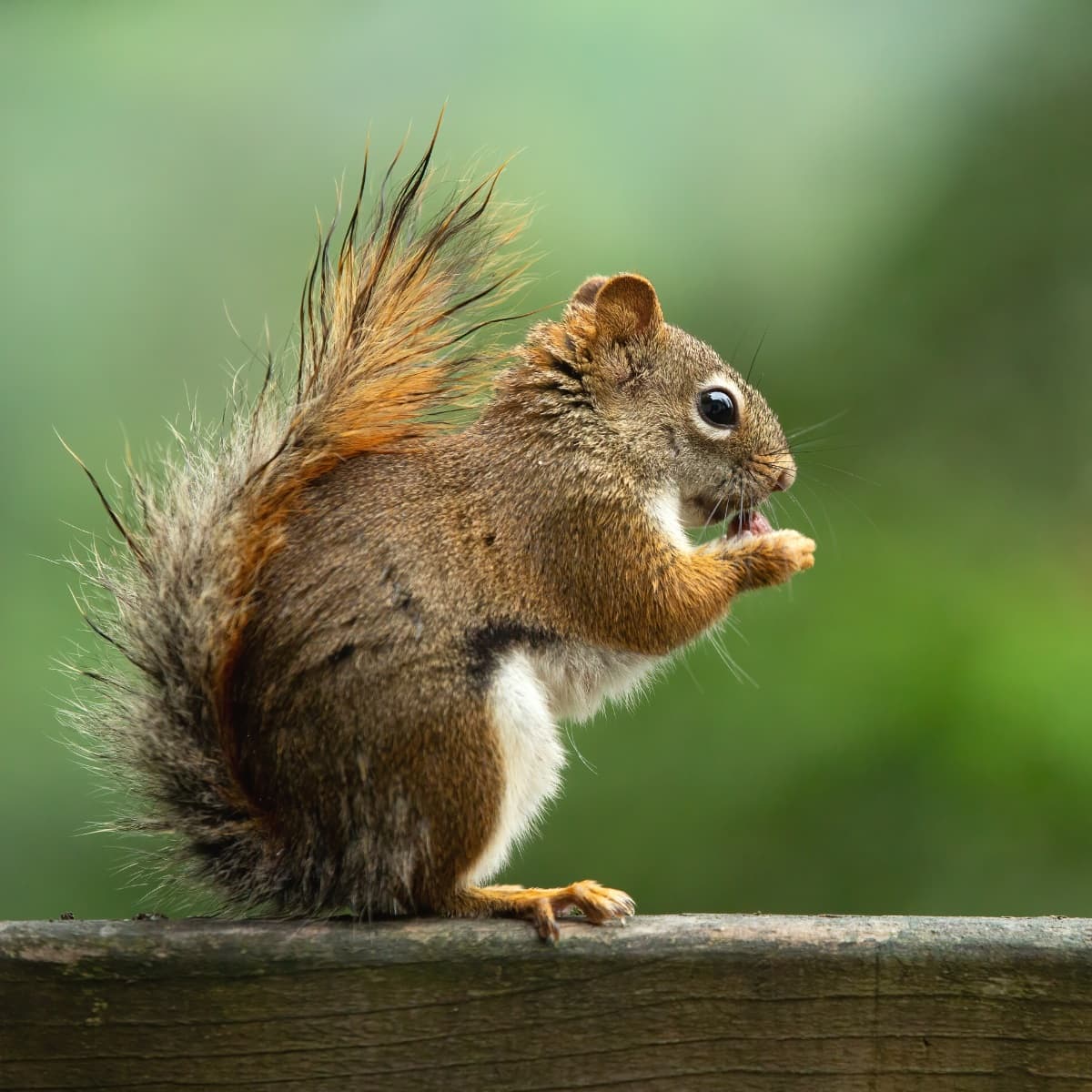
The American Red Squirrel is a delightful sight with its reddish fur and contrasting white belly.
This small-sized squirrel is quite widespread in the United States, particularly prevalent in northern and forested regions. Beyond its distinctive color, the American Red Squirrel is known for its lively demeanor, often seen energetically foraging and preparing for winter by collecting a variety of nuts and seeds.
Despite their petite stature, they have a reputation for being quite assertive and vocal when it comes to defending their territory. Indeed, their presence adds an element of vibrant color and spirited activity to the American outdoors.
| American Red Squirrel: | |
|---|---|
| Scientific name: | Tamiasciurus hudsonicus. |
| Characteristics: | Reddish fur and white belly, 10 to 15 inches long, 0.5 pounds average weight. |
| Area: | Widespread in the United States and Canada, mainly in forests. |
3. Fox Squirrel
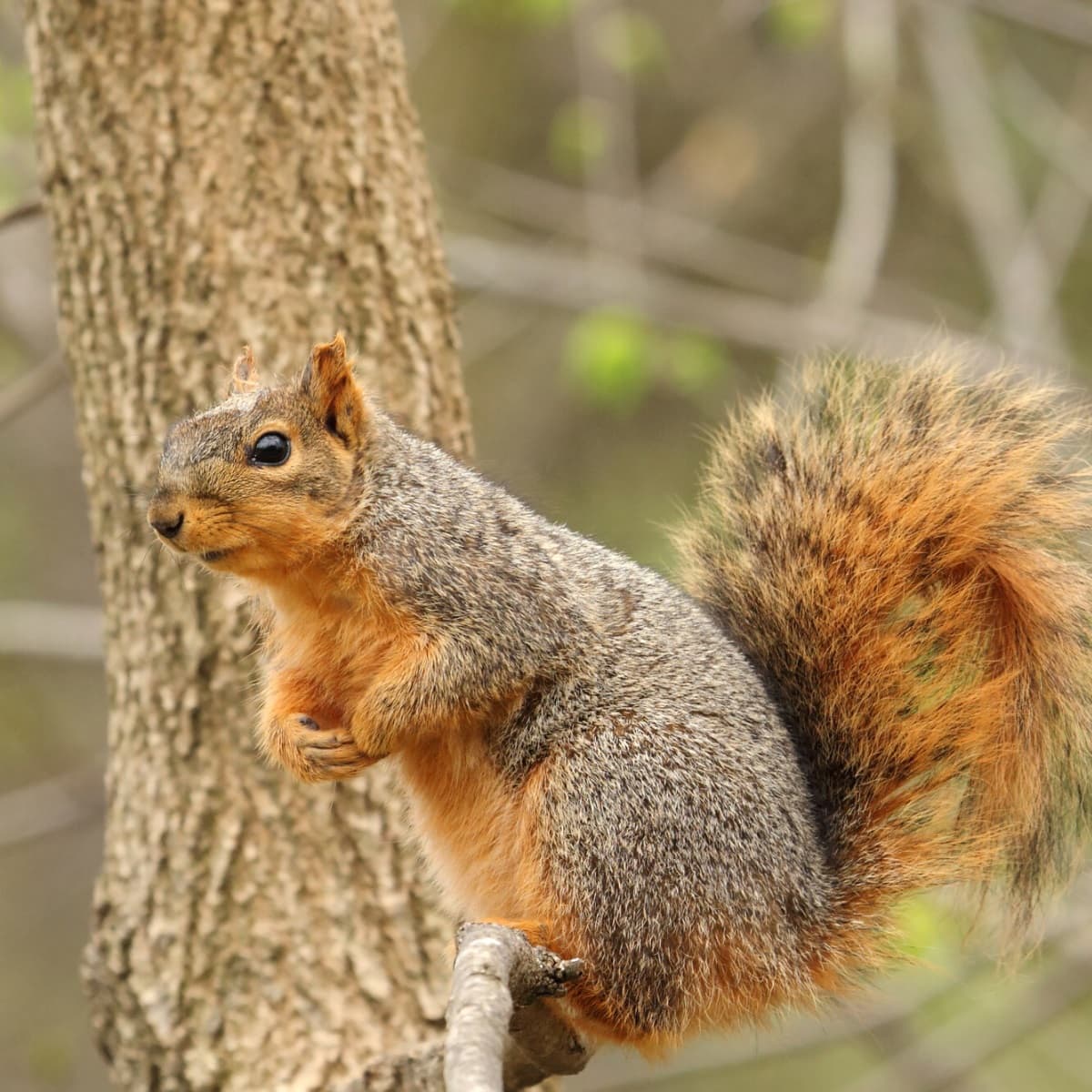
The Fox Squirrel is the largest species of tree squirrel native to North America. Its name derives from its fox-like tail, and it exhibits a diverse range of colors, from gray and black to red and brown, depending on geographical location.
Despite their size, these large, robust squirrels are often spotted leaping from branch to branch with impressive agility. Their preference for habitats with a mix of trees and open ground makes them a common sight in suburban areas and city parks.
Fox Squirrels are diligent foragers, collecting a range of nuts and seeds, and they play a key role in forest regeneration through their seed dispersal habits. Their presence is a sign of a healthy urban ecosystem.
| Fox Squirrel: | |
|---|---|
| Scientific name: | Sciurus niger. |
| Characteristics: | Fox-like tail, range of colors, 18 to 28 inches, 1.8 pounds average weight. |
| Area: | Words. |
4. Western Gray Squirrel
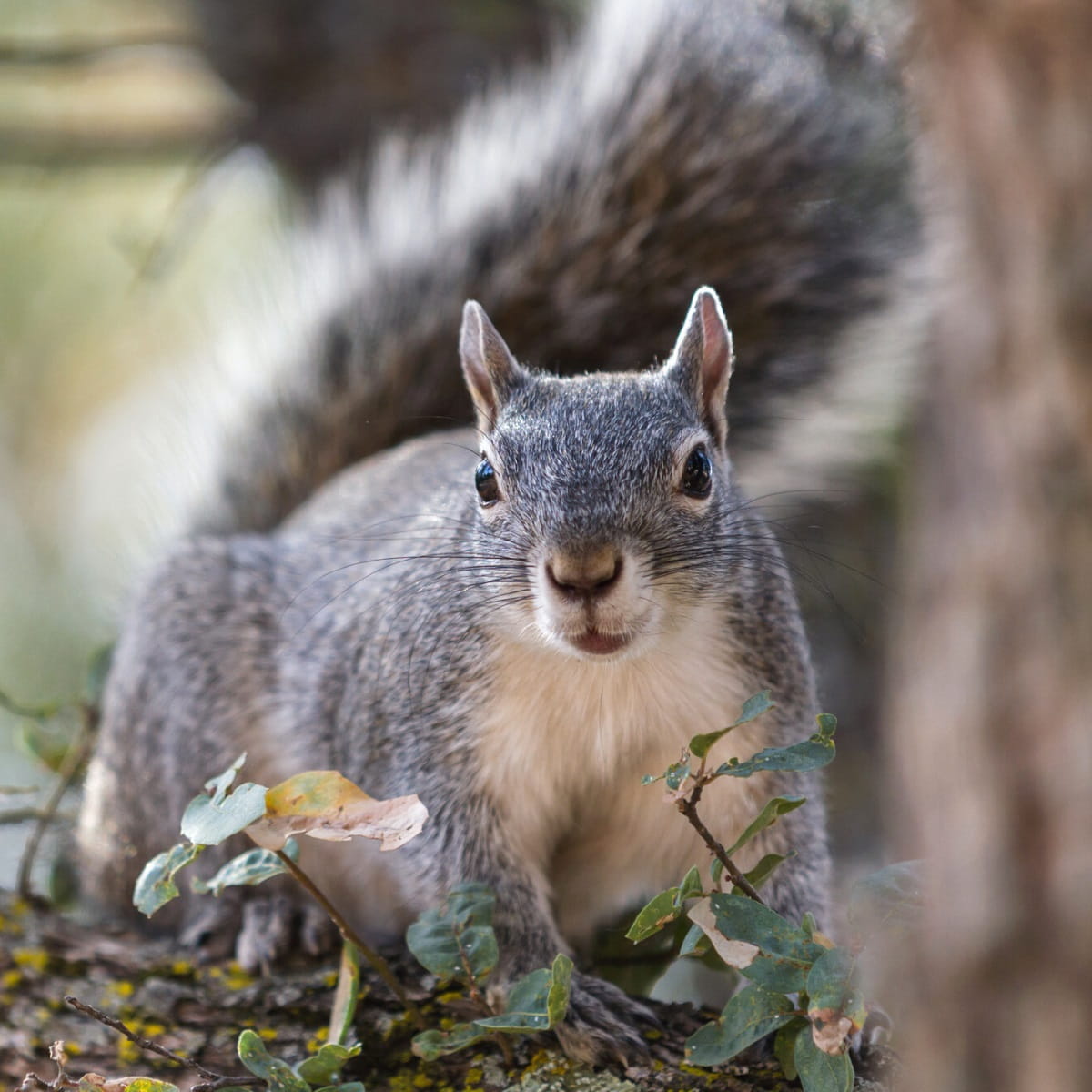
The Western Gray Squirrel is a charismatic presence in the western parts of the United States.
Similar to its eastern counterpart, this squirrel is distinguished by its larger size and more robust build. The soft gray coat, complemented by a white underbelly, gives this creature a distinct elegance.
Remarkably agile and nimble, they spend their days scampering through the trees and foraging for food on the ground. Western Gray Squirrels have an affinity for oak woodlands and coniferous forests, where they play a crucial role in seed dispersal, contributing to the growth and renewal of these ecosystems.
| Western Gray Squirrel: | |
|---|---|
| Scientific name: | Sciurus griseus. |
| Characteristics: | Soft gray coat with white underbelly, 18 to 24 inches long, 1.6 pounds average weight. |
| Area: | Western United States. |
5. California Ground Squirrel
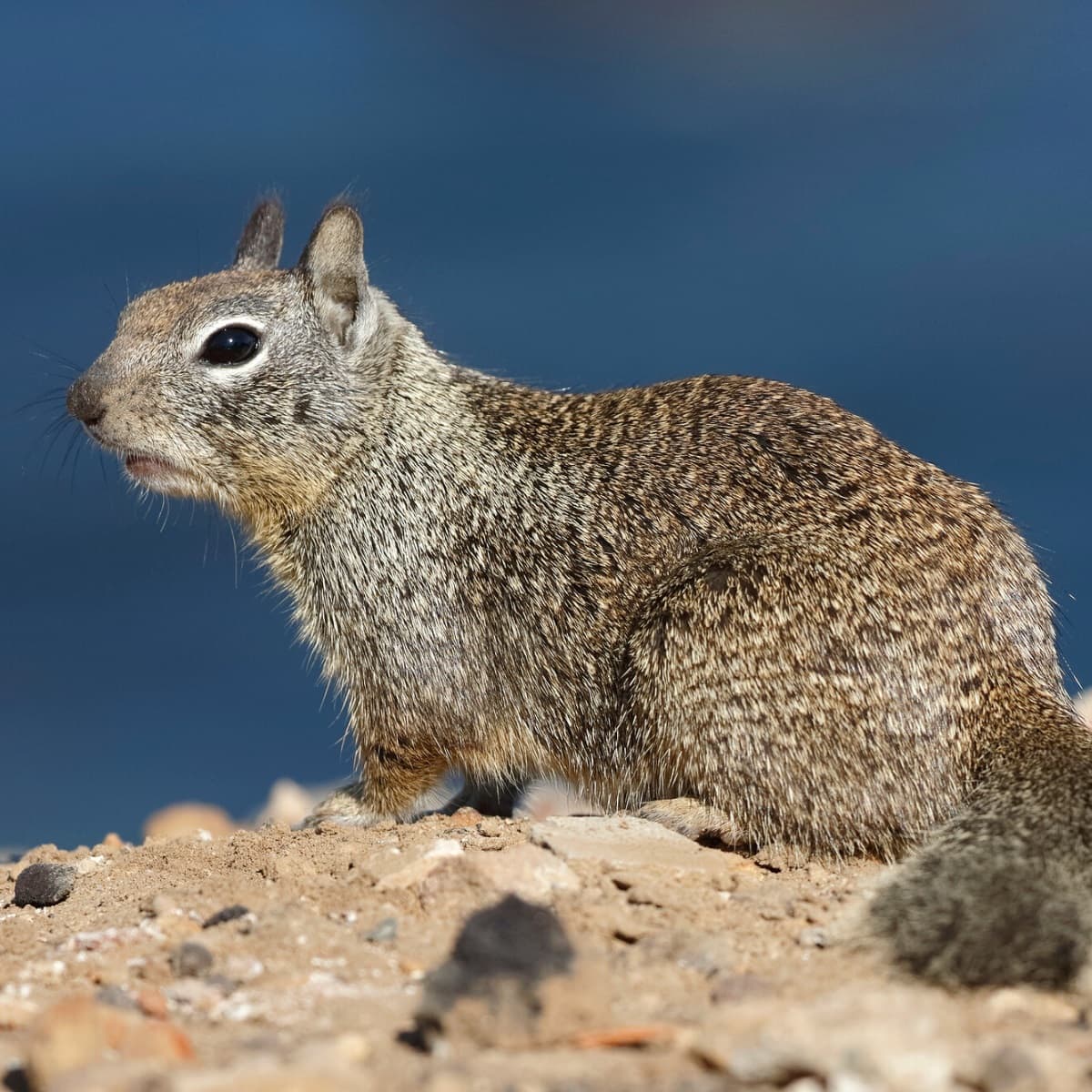
As the name suggests, the California Ground Squirrel predominantly resides in the western United States.
A master of adaptation, this squirrel’s fur pattern of gray and brown hues allows it to blend seamlessly into its arid surroundings. Unlike tree-dwelling species, this creature prefers to dwell in burrows, often a complex network of tunnels, providing both a home and a refuge from predators.
Equipped with a broad diet that includes seeds, fruits, insects, and sometimes even small vertebrates, the California Ground Squirrel is an integral part of its ecosystem. It’s always a pleasure to spot this distinctive creature with its alert stance and lively behavior.
| California Ground Squirrel: | |
|---|---|
| Scientific name: | Otospermophilus beecheyi. |
| Characteristics: | Gray and brown fur, 16 to 20 inches long, 1.1 pounds average weight. |
| Area: | Western United States. |
6. Douglas Squirrel
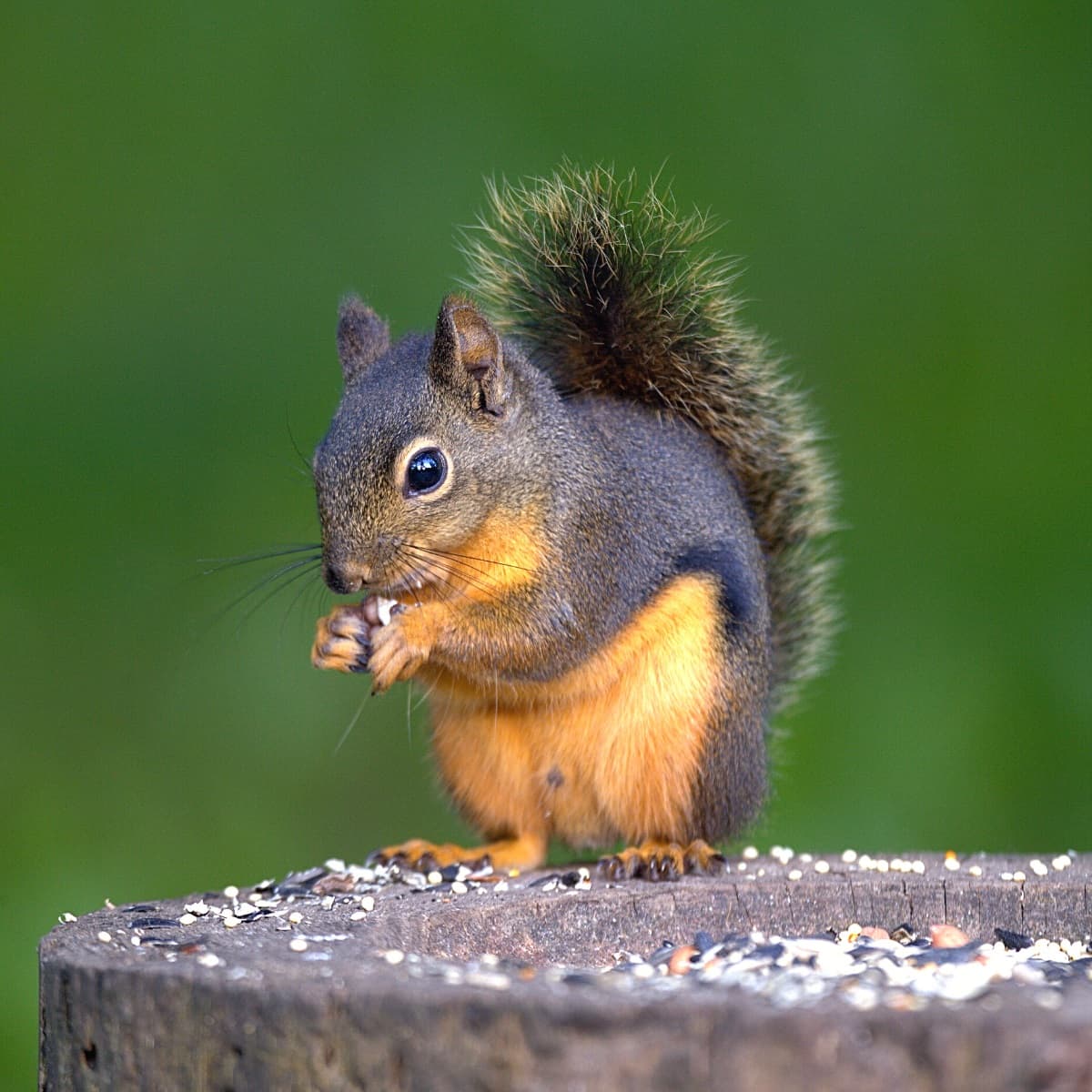
The Douglas Squirrel, fondly known as the chickaree or pine squirrel, is a native of the Pacific coastal states.
This small squirrel is identified by its reddish-brown fur and lively character. True to its alternate name, the pine squirrel, it shows a particular fondness for pine cones, often leaving characteristic piles of stripped cone scales near the base of trees.
Douglas Squirrels are typically found in old-growth forests, where their tireless energy and high-pitched calls add a dynamic layer to the tranquil forest atmosphere. Their role in dispersing fungal spores and seeds helps maintain the biodiversity and health of their forest homes.
| Douglas Squirrel: | |
|---|---|
| Scientific name: | Tamiasciurus douglasii. |
| Characteristics: | Reddish-brown fur, 12 to 14 inches long, 0.5 pounds average weight. |
| Area: | West Coast United States. |
7. Southern Flying Squirrel
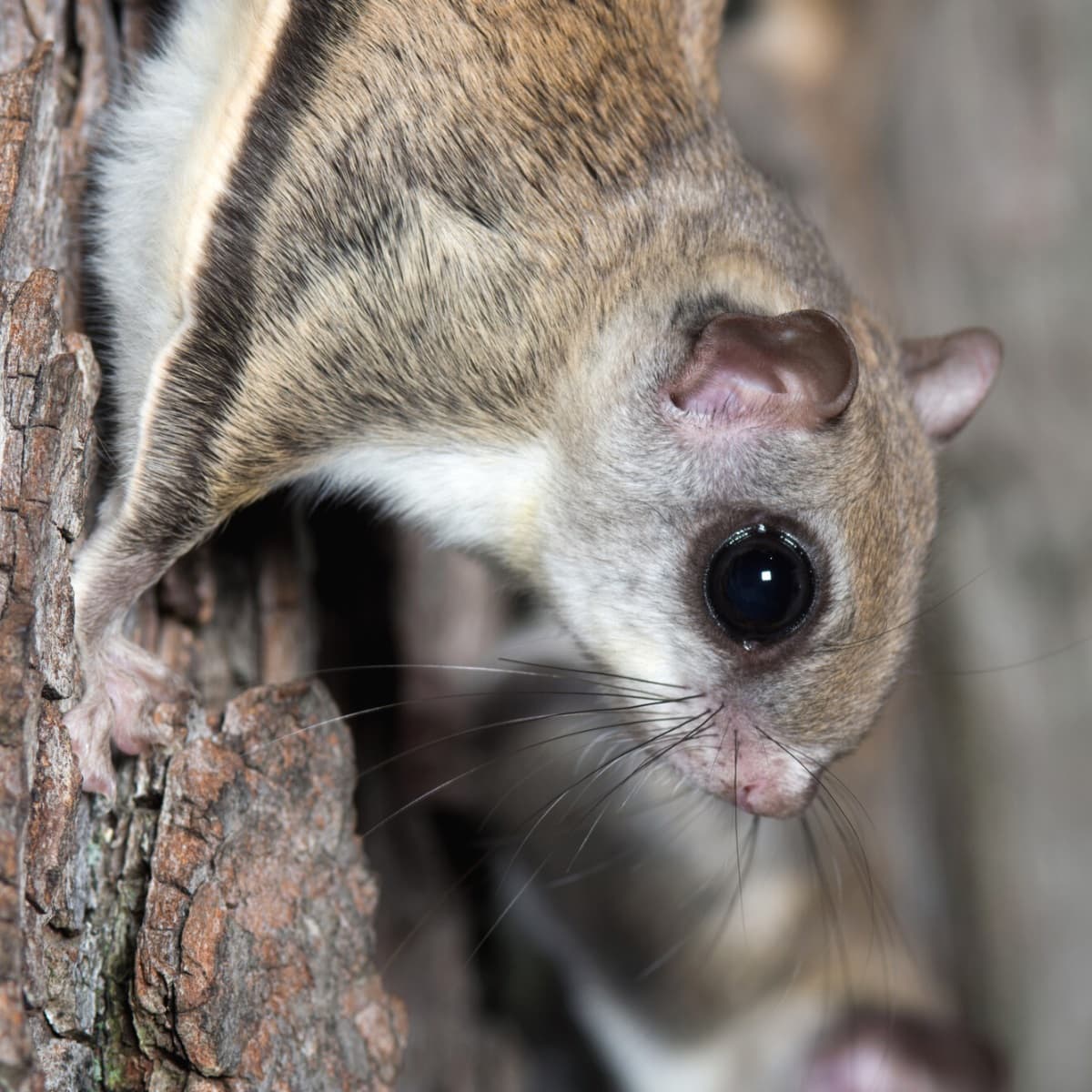
The Southern Flying Squirrel is a charming and unique species found predominantly in the eastern half of the United States.
While small in size, this squirrel has a unique ability that sets it apart from its counterparts: it can glide! Equipped with a thin membrane (patagium) stretching from its wrist to ankle, this creature is often seen taking impressive leaps from tree to tree in a gliding flight.
Nocturnal by nature, Southern Flying Squirrels are elusive and often spotted only by the lucky or the observant. Their diet consists mainly of nuts, seeds, fruits, and insects, contributing to their role as seed dispersers and controllers of insect populations.
| Southern Flying Squirrel: | |
|---|---|
| Scientific name: | Glaucomys volans. |
| Characteristics: | Grey-brown fur with patagium, 8 to 10.5 inches long, 0.15 pounds average weight. |
| Area: | Eastern United States. |
8. Northern Flying Squirrel
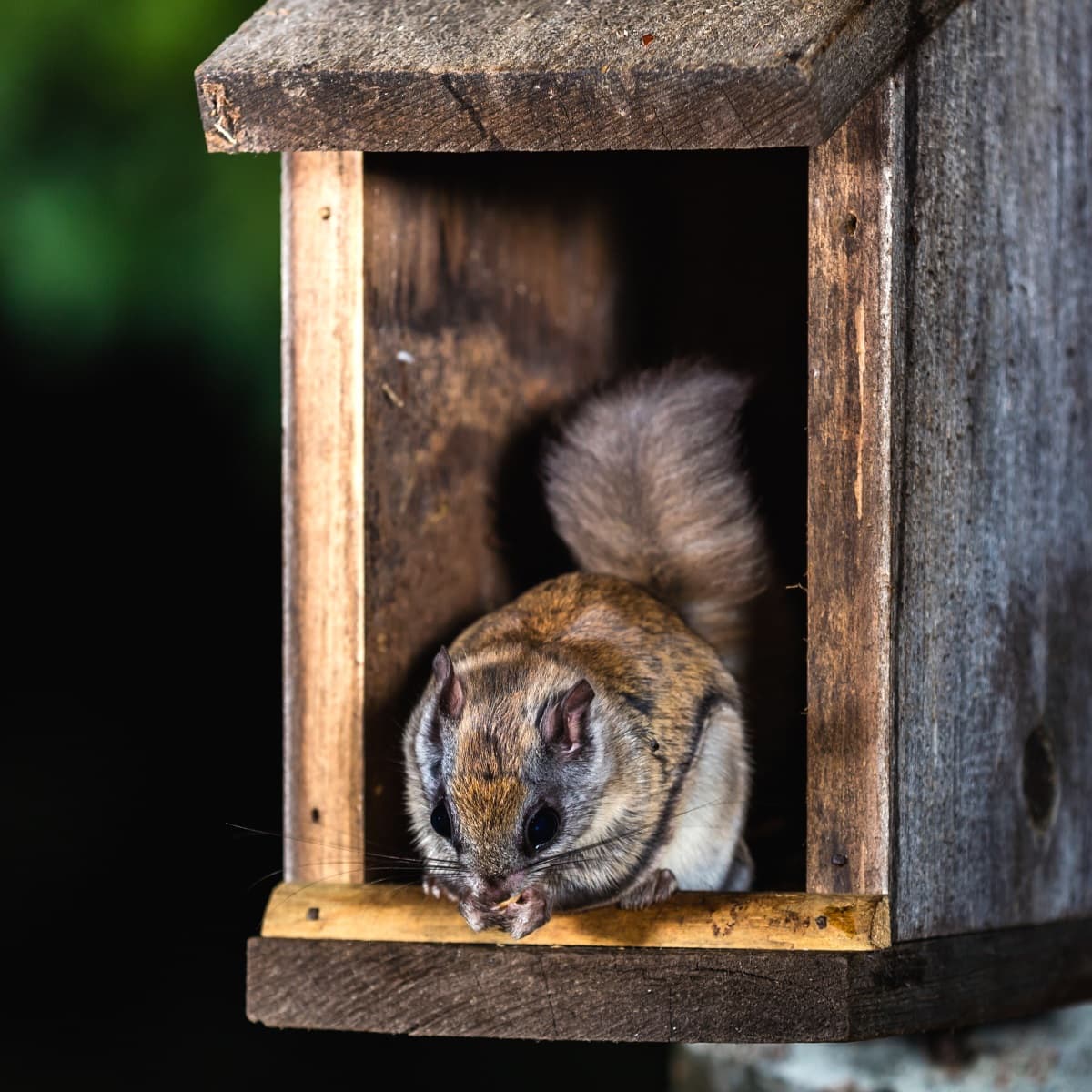
The Northern Flying Squirrel is an enchanting creature that resides mainly in the northern states and Alaska.
Like its southern cousin, this squirrel is equipped with a membrane stretching from its wrist to ankle, enabling it to glide from tree to tree. A predominantly nocturnal creature, the Northern Flying Squirrel has large eyes that aid in navigating during the dark hours.
Their diet is diverse, encompassing nuts, seeds, fruits, bird eggs, and even fungi. Interestingly, they play a crucial role in spreading fungi that are vital for the health of forest trees. Watching a Northern Flying Squirrel silently gliding against a moonlit sky is a unique sight.
| Northern Flying Squirrel: | |
|---|---|
| Scientific name: | Glaucomys sabrinus. |
| Characteristics: | Light brown fur with patagium, 10 to 15 inches long, 0.35 pounds average weight. |
| Area: | Northern United States and Alaska. |
9. Abert’s Squirrel
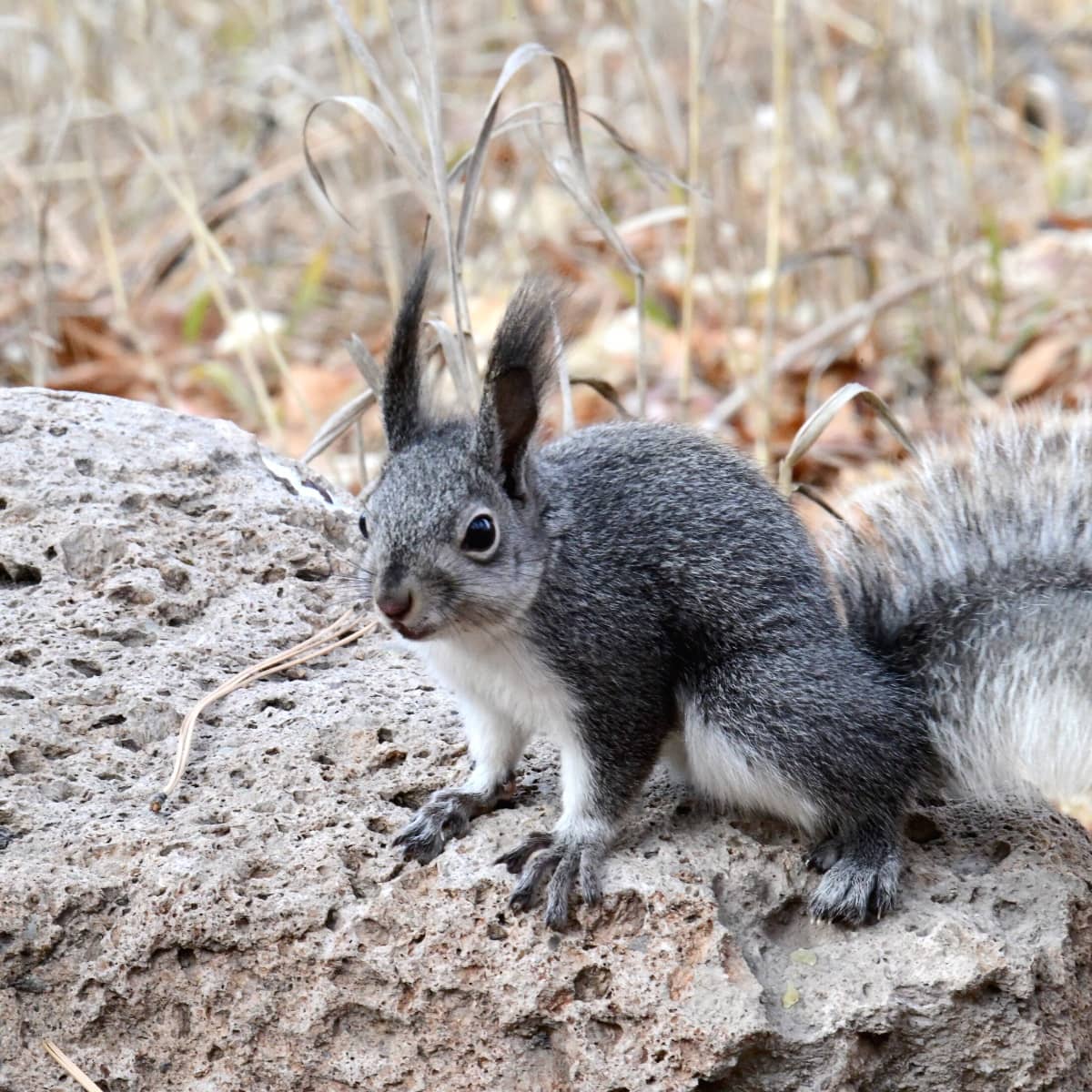
The Abert’s Squirrel, renowned for its distinct tasseled ears and long, bushy tail, calls the Rocky Mountains region its home.
Primarily found in ponderosa pine forests, the squirrel’s dark gray to black fur provides an elegant contrast to the warm tones of the pine bark. This species displays a fascinating relationship with its preferred habitat, feeding on the seeds, buds, and cones of the ponderosa pines, and even utilizing the tree’s bark for nesting material.
Often seen nimbly navigating the treetops, the Abert’s Squirrel is an agile and energetic creature. Its presence and unique behaviors contribute to the vibrant biodiversity and balance of the forest ecosystem.
| Abert’s Squirrel: | |
|---|---|
| Scientific name: | Sciurus aberti. |
| Characteristics: | Tasseled ears and long tail, 18 to 24 inches long, 1.7 pounds average weight. |
| Area: | Rocky Mountains. |
10. Eastern Chipmunk
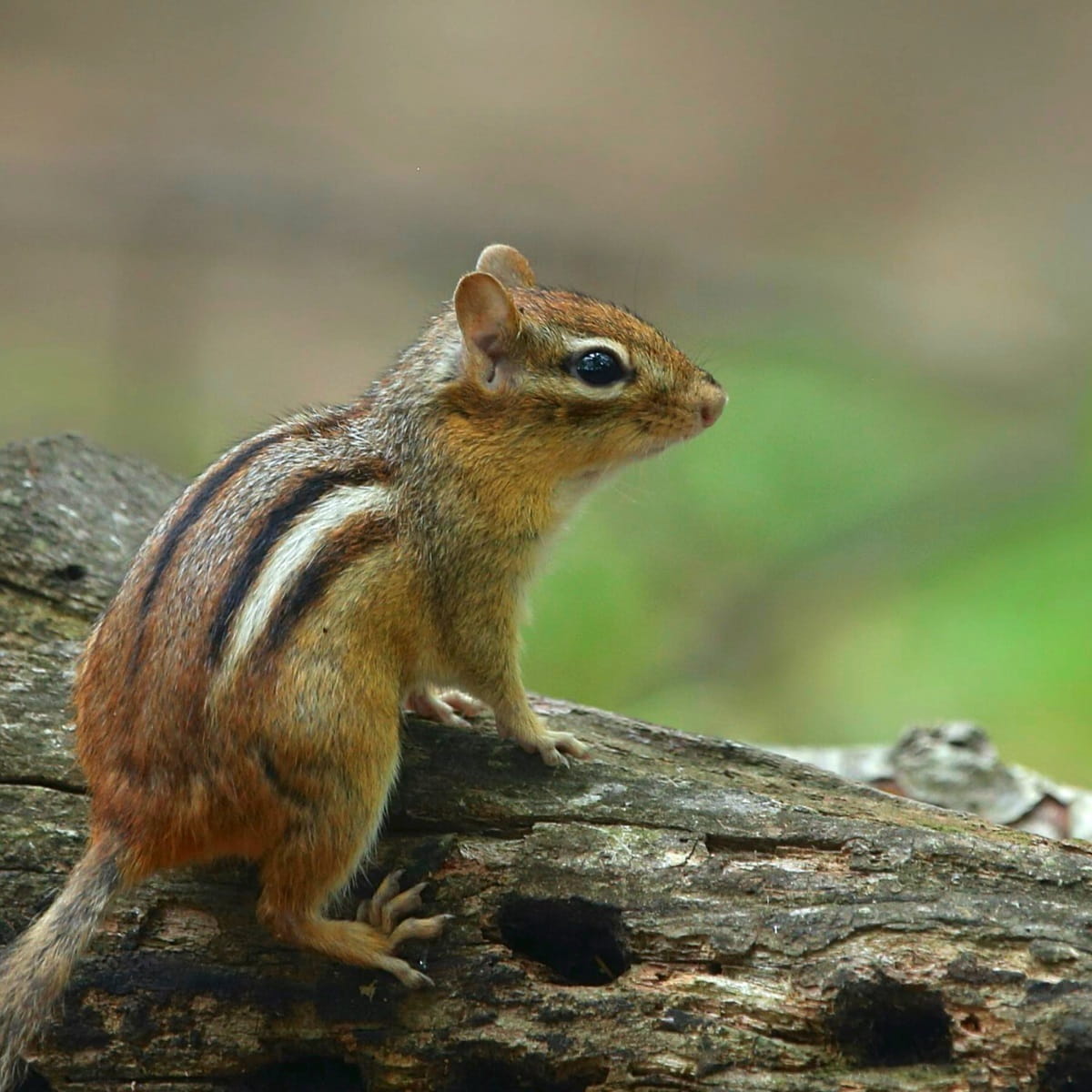
While technically not a squirrel, the Eastern Chipmunk is a member of the squirrel family and a familiar sight in many parts of the northeastern U.S.
Small yet distinctive, these creatures are easily recognizable by their reddish-brown fur adorned with five dark stripes running down their back and sides. They are often seen darting around with cheeks full of food, storing their bounty in underground burrows.
Eastern Chipmunks play an essential role in their ecosystem by dispersing seeds and aerating the soil with their extensive burrowing. Their animated chirping calls add a lively soundtrack to any garden or woodland they inhabit.
| Eastern Chipmunk: | |
|---|---|
| Scientific name: | Tamias striatus. |
| Characteristics: | Reddish-brown fur with dark stripes, 10 to 14 inches long, 0.25 pounds average weight. |
| Area: | northeastern United States. |
Further Reading
Squirrels, some people love them, others hate them. I enjoy watching squirrels, but I also understand how they can often be considered a pest.
If you have squirrels in your backyard but don’t want them there, read my guide on plants and flowers that repel squirrels for ways to keep your garden safe from invaders. Do you have a bird feeder? Read my guide on how to make a bird feeder squirrel-proof with some practical tips.
Otherwise, if you’d like to attract squirrels to the backyard or offer them some help in the colder winter months, read my guide on what to feed squirrels with tips on what squirrels can and can not eat.
